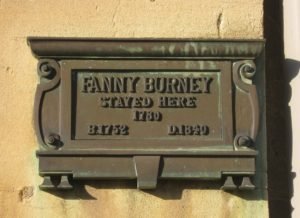Art by Louisa Albani to Feature in 'Extraordinary Women in Bath' Exhibition at BRLSI
'Extraordinary Women in Bath' is a new exhibition opening at Bath Royal Literary and Scientific Institution (BRLSI) on 5 January 2019 and featuring artworks by Louisa Albani. **Update: the exhibition has now been extended until 2 March 2019**
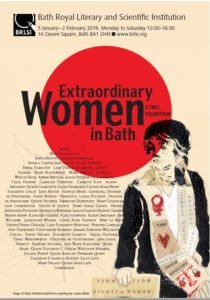
Around the historic city of Bath there are few plaques commemorating women. Only eleven out of eighty placed by Bath Heritage recognise women and their achievements. This is not unusual. Across the UK only 2.7% of statues are of actual, historical, non-royal women – and most are of Queen Victoria.
This exhibition features real women, with real lives and real stories, who have had a connection to Bath over a millennium. So often women have played important but overlooked roles as educators, reformers, writers, artists, traders, and community builders – both in Bath and the wider world. No longer silent and invisible ghosts in our history, these women reveal themselves and their contributions. This small selection of pioneers honours the legacy of all women, especially those lost to the historical record with their stories untold. The exhibition will also feature other aspects of women’s activities: Books from the historic library of BRLSI written by women authors over the last 250 years. Pages from a herbarium donated to BRLSI in 1825 by Miss Lucy Sarah Atkins, which formed the core of the Institution’s botanical collections.
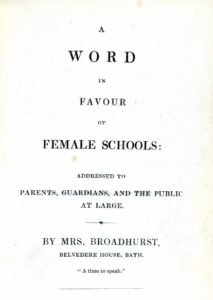 In the gallery will be artworks by artist Louisa Albani, inspired by two notable women who spent time in Bath. Mary Wollestonecraft wrote A Vindication of the Rights of Woman one hundred years before the Suffragettes took up the cause of equal rights for women; 35 years after her mother’s departure her daughter, Mary Shelley, arrived and wrote much of her innovative novel Frankenstein here. These women left a legacy of progressive ideas, philosophies and stories, part of a historical powerhouse of women writers whose literary works still resonate. Louisa Albani’s work engages audiences in a new and fresh way, bringing their words to life again through creativity. This post is provided by Louisa Albani.
In the gallery will be artworks by artist Louisa Albani, inspired by two notable women who spent time in Bath. Mary Wollestonecraft wrote A Vindication of the Rights of Woman one hundred years before the Suffragettes took up the cause of equal rights for women; 35 years after her mother’s departure her daughter, Mary Shelley, arrived and wrote much of her innovative novel Frankenstein here. These women left a legacy of progressive ideas, philosophies and stories, part of a historical powerhouse of women writers whose literary works still resonate. Louisa Albani’s work engages audiences in a new and fresh way, bringing their words to life again through creativity. This post is provided by Louisa Albani.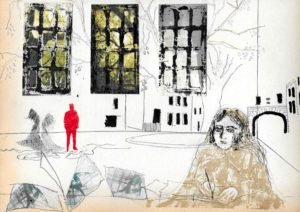 In 1778, a nineteen year old young woman travelled from London to Bath, to begin working as a paid companion to Sarah Dawson, described by William Godwin as a lady of ‘great peculiarity of temper’ whichsuggests she was not an easy woman to work for. But the young woman was no ordinary ‘companion’. Her name was Mary Wollstonecraft and fourteen years later she would go on to write A Vindication of the Rights of Woman, 100 years before the Suffragettes took up the cause of equal rights for women.
In 1778, a nineteen year old young woman travelled from London to Bath, to begin working as a paid companion to Sarah Dawson, described by William Godwin as a lady of ‘great peculiarity of temper’ whichsuggests she was not an easy woman to work for. But the young woman was no ordinary ‘companion’. Her name was Mary Wollstonecraft and fourteen years later she would go on to write A Vindication of the Rights of Woman, 100 years before the Suffragettes took up the cause of equal rights for women.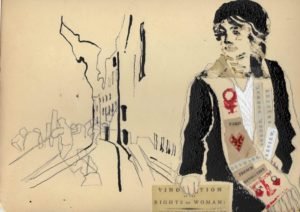 Mary was not drawn to the fashionable high society circles that Bath attracted at this time, but she stayed for financial reasons, returning to London in 1781 because of her mother’s illness. She never returned to Bath, travelling much further afield to both France, where she wrote correspondence on the French Revolution, and Scandinavia, where she acted as an envoy for her American lover Gilbert Imlay, by investigating a missing cargo of silver from one of his ships.
Mary was not drawn to the fashionable high society circles that Bath attracted at this time, but she stayed for financial reasons, returning to London in 1781 because of her mother’s illness. She never returned to Bath, travelling much further afield to both France, where she wrote correspondence on the French Revolution, and Scandinavia, where she acted as an envoy for her American lover Gilbert Imlay, by investigating a missing cargo of silver from one of his ships.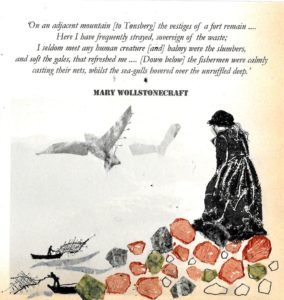 35 years after Mary Wollstonecraft left Bath, her daughter, Mary Shelley, was to write her extraordinary novel Frankenstein there whilst living at 5 Abbey Churchyard. Mary Wollstonecraft had died shortly after giving birth, and by the time she was a teenager, Mary Shelley had already eloped to Europe with Percy Bysshe Shelley, following an early life in London growing up without a mother. During her time in Bath, Mary spent her time writing, as well as taking drawing lessons. However, it was a time of great sadness for her, as during this period, her step-sister Fanny, Wollstonecraft’s daughter from her relationship with Gilbert Imlay, committed suicide, as did Percy’s first wife Harriet. By 1818, the Shelleys have left England for a nomadic existence abroad. Two years later, whilst in Italy, Mary Shelley was to imaginatively ‘return’ to the West Country, although this time not to Bath, but to the Devonshire coast instead, where she set her story Maurice or The Fisher’s Cot.
35 years after Mary Wollstonecraft left Bath, her daughter, Mary Shelley, was to write her extraordinary novel Frankenstein there whilst living at 5 Abbey Churchyard. Mary Wollstonecraft had died shortly after giving birth, and by the time she was a teenager, Mary Shelley had already eloped to Europe with Percy Bysshe Shelley, following an early life in London growing up without a mother. During her time in Bath, Mary spent her time writing, as well as taking drawing lessons. However, it was a time of great sadness for her, as during this period, her step-sister Fanny, Wollstonecraft’s daughter from her relationship with Gilbert Imlay, committed suicide, as did Percy’s first wife Harriet. By 1818, the Shelleys have left England for a nomadic existence abroad. Two years later, whilst in Italy, Mary Shelley was to imaginatively ‘return’ to the West Country, although this time not to Bath, but to the Devonshire coast instead, where she set her story Maurice or The Fisher’s Cot.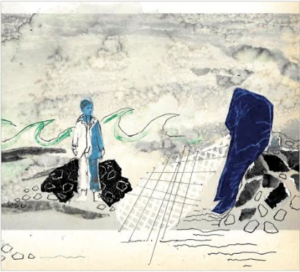 The story was written for Laurette, the daughter of Lady Margaret Mountcashell, who as a teenage girl had been tutored by Mary Wollstonecraft. With its simple language and observations of the natural world, Shelley’s story evokes Wordworth, who coincidentally much admired her mother’s Letters from Norway written during her Scandinavian trip.
The story was written for Laurette, the daughter of Lady Margaret Mountcashell, who as a teenage girl had been tutored by Mary Wollstonecraft. With its simple language and observations of the natural world, Shelley’s story evokes Wordworth, who coincidentally much admired her mother’s Letters from Norway written during her Scandinavian trip.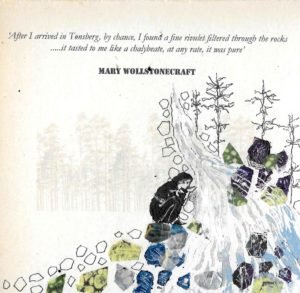 This art exhibition draws on these two extraordinary women who left us a legacy of intellectually thought-provoking and progressive ideas, philosophies and stories, and are both very much part of a historicalpowerhouse of women writers whose literary works still have resonance today. As an artist, I hope to engage audiences in a new and fresh way, by bringing alive once again their words through creativity.
This art exhibition draws on these two extraordinary women who left us a legacy of intellectually thought-provoking and progressive ideas, philosophies and stories, and are both very much part of a historicalpowerhouse of women writers whose literary works still have resonance today. As an artist, I hope to engage audiences in a new and fresh way, by bringing alive once again their words through creativity.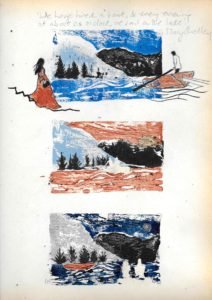
'Extraordinary Women in Bath' is a free exhibition running from 5 January – 2 March 2019, Monday to Saturday 10.00–16.00 atBath Royal Literary and Scientific Institution
16 Queen Square, Bath BA1 2HN
Visit www.brsi.org for more information


